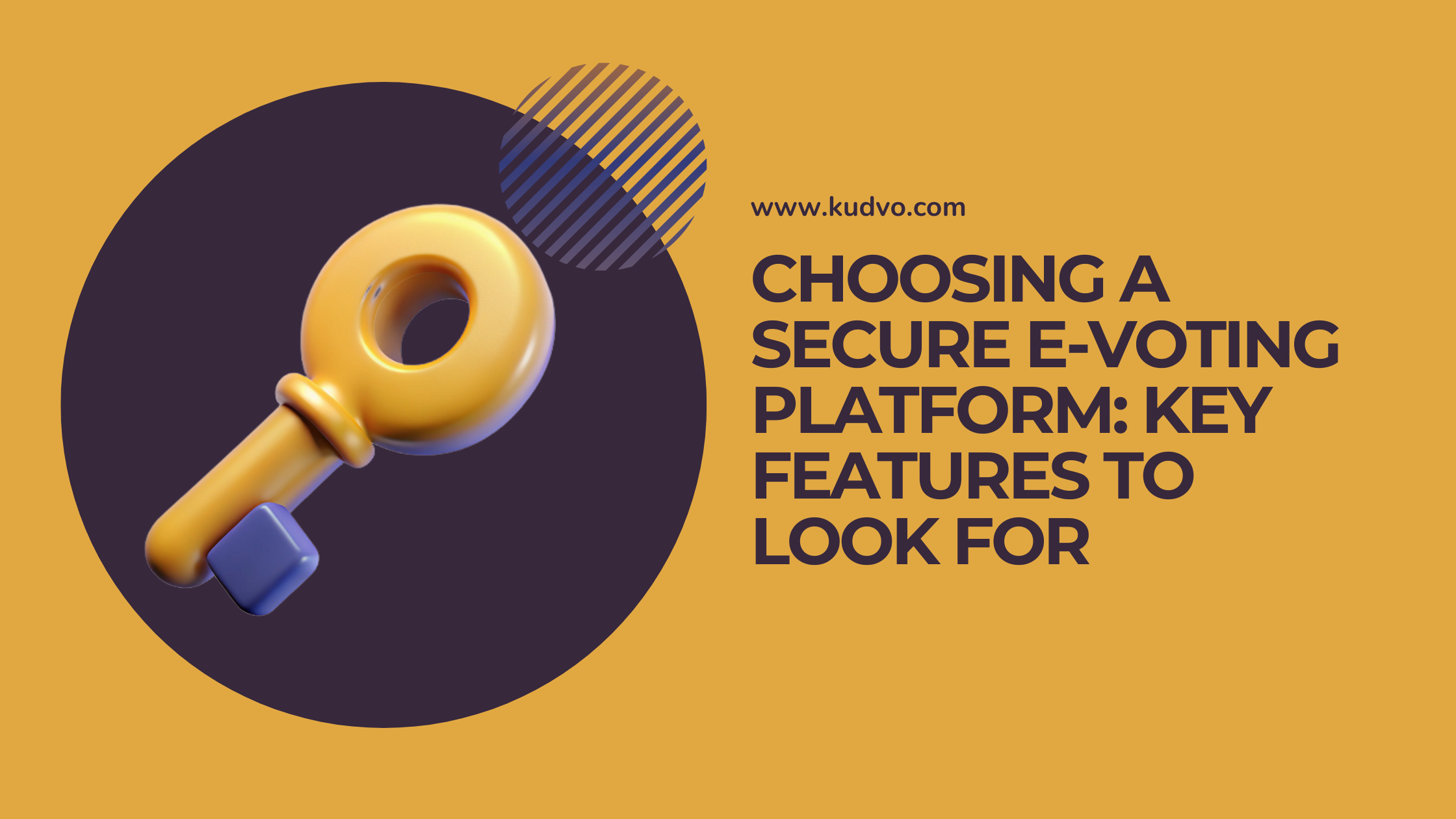How to Choose a Secure E-Voting Platform
Introduction
Thinking about running an election online but unsure how to keep it secure?
Whether you're organizing a student election, a corporate vote, or a national poll, using a reliable e-voting platform is crucial. But not all platforms are built the same—and when trust and transparency are on the line, choosing the wrong one could be a costly mistake.
In this guide, we’ll walk you through the key features to look for in a secure e-voting system. By the end, you’ll know exactly what to prioritize to ensure your election is private, tamper-proof, and easy to manage.
Want a platform that checks all the boxes? Kudvo offers secure, scalable, and transparent e-voting built for modern needs.
1. End-to-End Encryption
If votes aren't encrypted from start to finish, they're vulnerable to interception or manipulation. End-to-end encryption (E2EE) ensures your vote stays private and unchanged, even as it travels through the internet.
Look for:
Encryption during vote casting, transmission, and storage.
No access to decrypted votes until tallying.
Cryptographic protection of voter anonymity.
Example: Estonia's national e-voting system uses E2EE to protect millions of votes every year.
2. Voter Authentication & Eligibility Controls
Only eligible voters should be able to participate—and only once. A secure platform needs robust voter authentication and smart eligibility filters.
Key features:
Two-factor or multi-factor authentication (MFA).
Unique voter IDs to prevent duplicate votes.
Role-based access for election admins.
Why it matters: Without proper authentication, fraudulent votes can be cast, skewing the results and eroding trust.
3. Auditability and Transparency
Voters and organizers should be able to verify the election process without compromising privacy. Transparent platforms provide verifiable audit trails that allow for independent checks and public trust.
You should expect:
Voter-verified receipts (without revealing vote choices).
Public or third-party auditing options.
Open-source code or independent security reviews.
Bonus: Some systems use blockchain or cryptographic proofing to make audit logs immutable and tamper-evident.
4. User-Friendly Interface & Accessibility
Security doesn’t have to come at the cost of usability. A great e-voting platform is easy to use for both voters and election organizers.
Checklist:
Intuitive voting flow and responsive design.
Mobile compatibility.
Multilingual support.
Accessibility features (screen readers, keyboard navigation, etc.).
Stat: According to a 2022 usability study, 47% of users abandon complex e-voting systems due to poor user experience.
Tip: Always test the platform with a sample election before going live.
5. Scalable, Reliable Infrastructure
Whether your election has 50 voters or 50,000, the platform should handle it smoothly. Scalability and uptime are crucial, especially during peak voting periods.
Evaluate:
Server redundancy and data backup systems.
Load balancing for high-traffic situations.
Downtime and incident response policies.
A failed server during voting can mean lost votes—or worse, a canceled election.
Conclusion
Choosing a secure e-voting platform isn’t just about convenience—it’s about trust, transparency, and fairness. Here's a quick recap of the must-have features:
✅ End-to-end encryption
✅ Strong voter authentication
✅ Transparent and auditable results
✅ Simple, accessible interface
✅ Scalable and reliable infrastructure
Don’t settle for less. Make sure your next election is safe, smooth, and credible.
Ready to launch your secure online election? Kudvo offers all these features and more—trusted by schools, companies, and communities worldwide.
